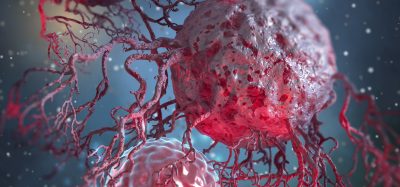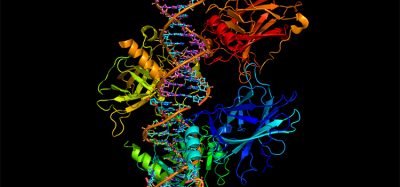Researchers develop Raman imaging probes for detecting enzyme activities
Posted: 26 April 2023 | Izzy Wood (Drug Target Review) | No comments yet
Japanese researchers have developed activatable Raman probes based on 9CN-rhodol, offering a promising tool for detecting multiple enzyme activities in heterogeneous biological tissues. This new molecular design strategy allows for highly specific and sensitive detection of enzyme activities, offering potential applications in disease diagnosis and biological research.

Researchers from the Tokyo Institute of Technology (Tokyo Tech), Japan, have demonstrated that Raman imaging has a greater potential for detecting multiple enzyme activities compared to fluorescence imaging.
The team developed activatable Raman probes using a novel mechanism for Raman signal activation, based on 9CN-rhodol, which showed high aggregation and multiplexing ability, making it a promising tool for detecting multiple enzyme activities in heterogeneous biological tissues. Their study was published in the Journal of the American Chemical Society.
Enzymes are involved in a wide range of biological activities and are ideal biomarkers for disease detection. Fluorescence imaging is commonly used for detecting upregulated cancer-associated enzymes in cancer-specific diagnostic technologies. However, the inability to detect multiple enzyme activities simultaneously can limit the application of fluorescence imaging in heterogeneous tumour tissues and other complex biological phenomena.
Raman spectral imaging, with its narrower spectral width, offers hope for multiplexing biological imaging with molecular probes. Previous attempts to design activatable Raman probes for detecting enzyme activities have been limited by the diffusion of enzyme-generated hydrolysis products, which makes it difficult to distinguish regions with target enzyme activity in tissues.
The team from Tokyo Tech, led by Professor Mako Kamiya and Assistant Professor Hiroyoshi Fujioka, took inspiration from aggregation-based fluorescent probes and developed a new molecular design strategy for activatable Raman probes based on 9CN-rhodol. They selected two derivatives, 9CN-JR and 9CN-JCR, as candidates for designing the activatable Raman probes and tested their enzyme detection performance in live cells using a dual-colour stimulated Raman scattering (SRS) imaging technique. 9CN-JCR emerged as the better and brighter probe for multiplexing.
Two new isotope-labelled 9CN-JCR probes were created for detecting specific enzymes, γ-glutamyl transpeptidase and dipeptidyl peptidase-4, in live cell culture. The new set of 9CN-JCR-based probes was able to simultaneously detect the activities of all these enzymes. Moreover, the probes allowed ex vivo imaging of distinct cell regions expressing target enzyme activity in Drosophila wing disk and fat body with high spatial selectivity and sensitivity.
The aggregation-based molecular design strategy used in this study improves the intracellular retention of the Raman probes and increases the SRS signal intensity during enzyme detection. The researchers believe that their strategy can facilitate the development of highly specific activatable Raman probes for the simultaneous detection of multiple enzyme activities, offering advantages for investigating enzyme activity associated with diseases and essential biological activities.
“This aggregation-based molecular design strategy for Raman probes will offer substantial advantages for applications involving the investigation of enzyme activity associated with diseases and essential biological activities,” concluded Kamiya.
Related topics
Enzymes, Ex Vivo, Imaging, Molecular Biology, Molecular Targets, Targets
Related organisations
Tokyo Institute of Technology
Related people
Assistant Professor Hiroyoshi Fujioka, Professor Mako Kamiya







